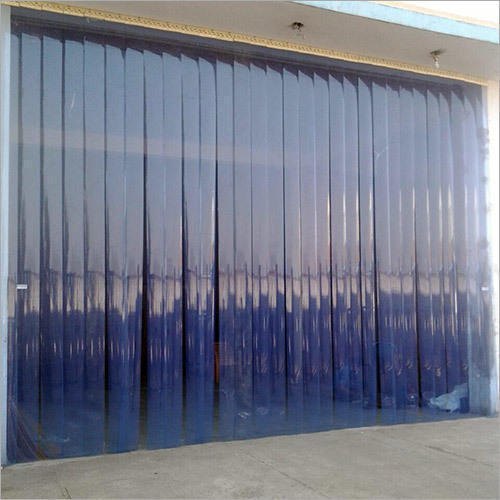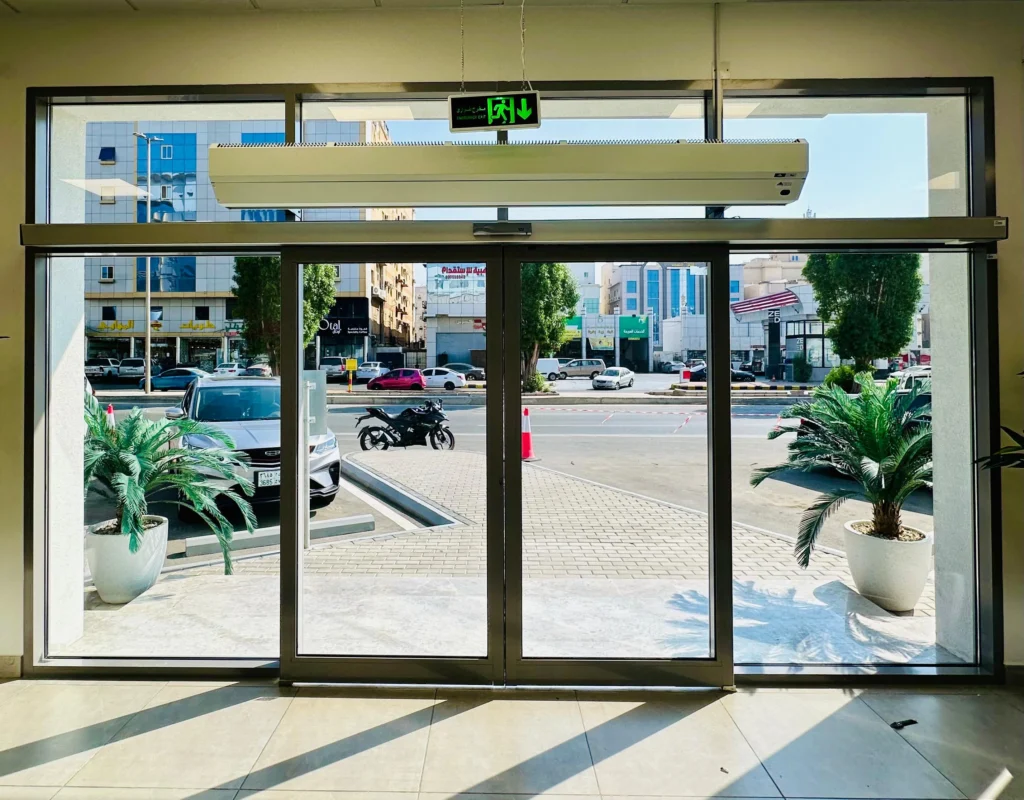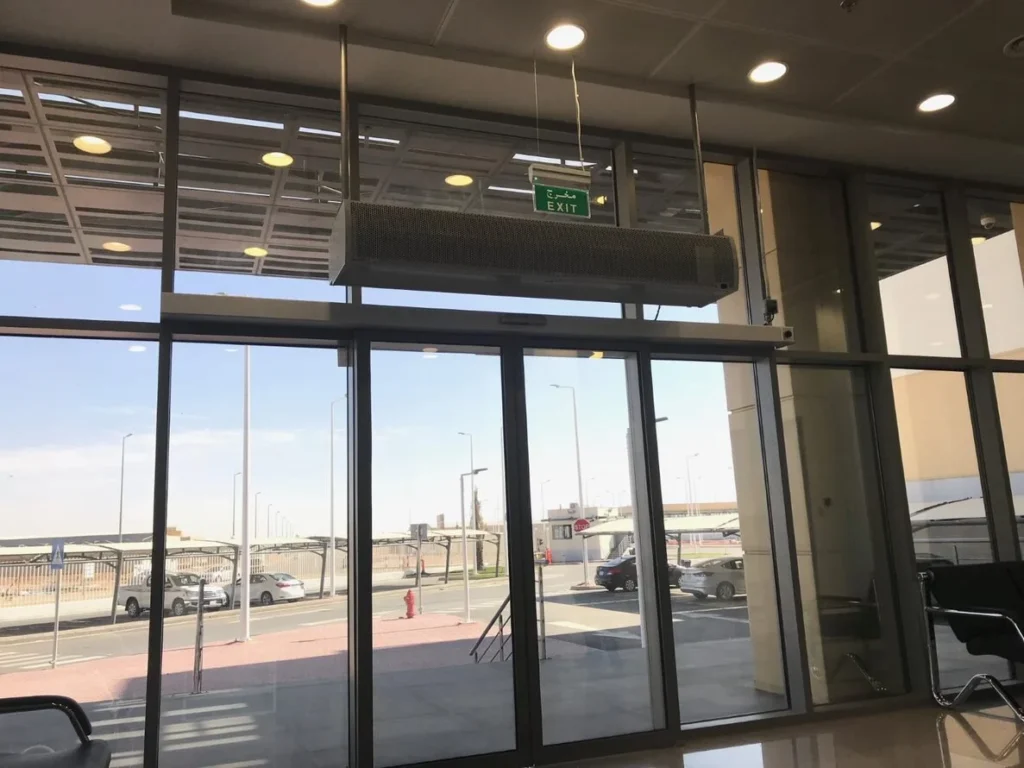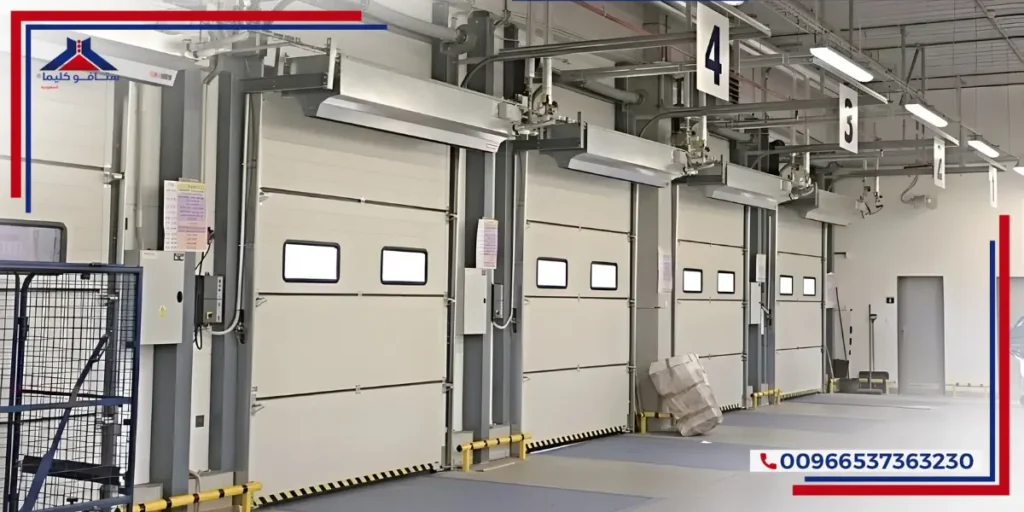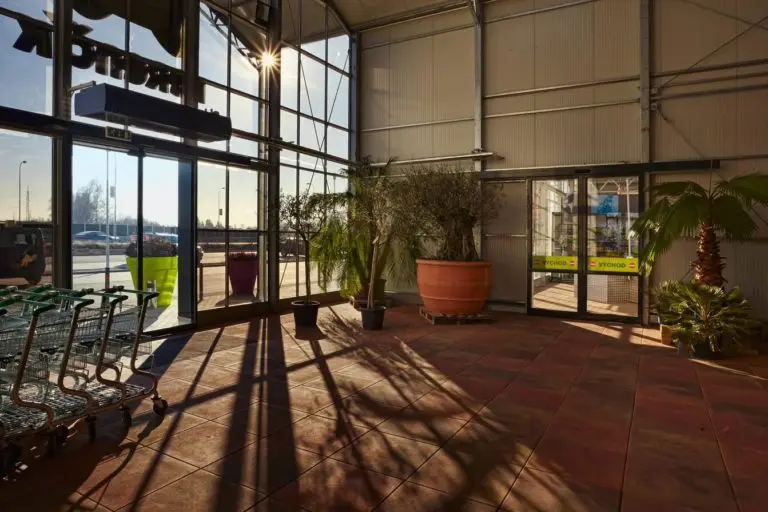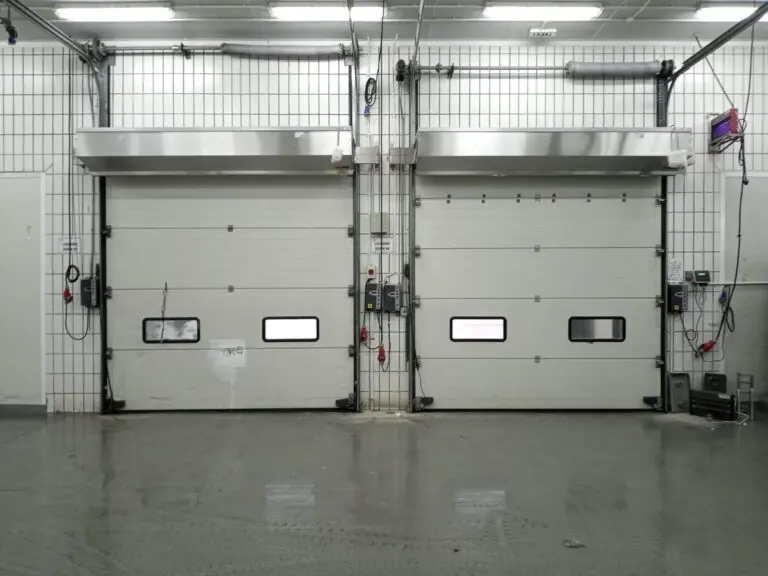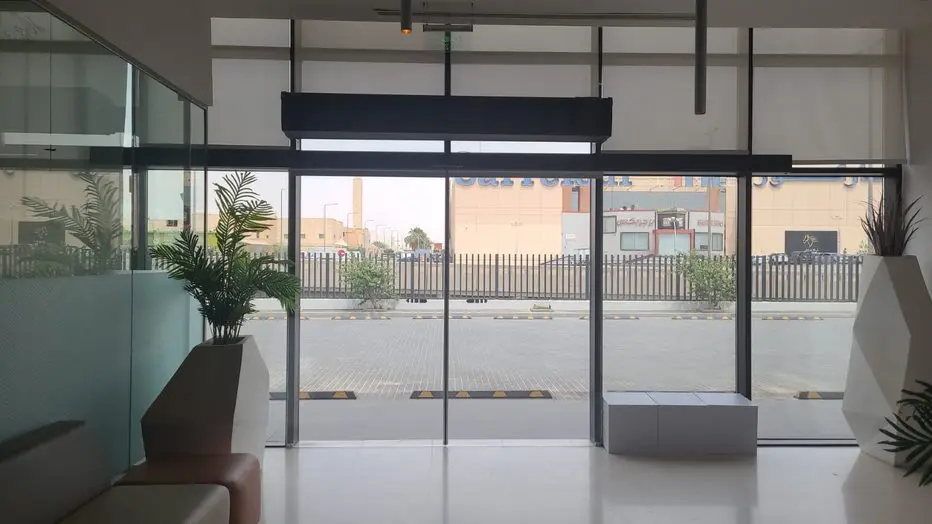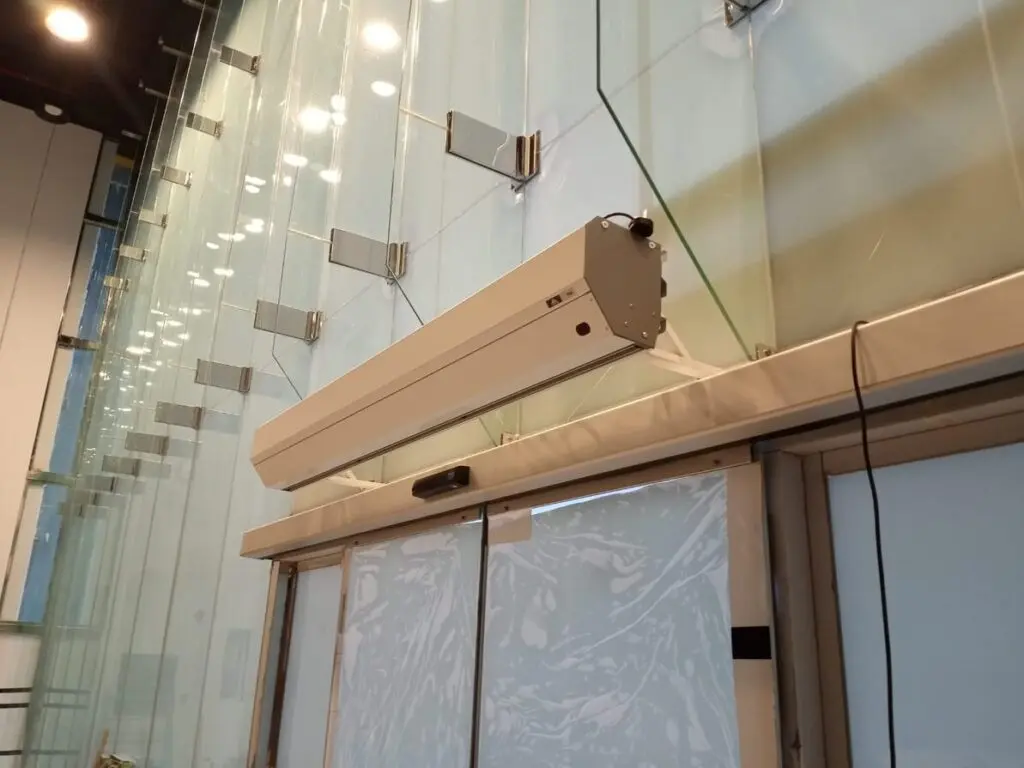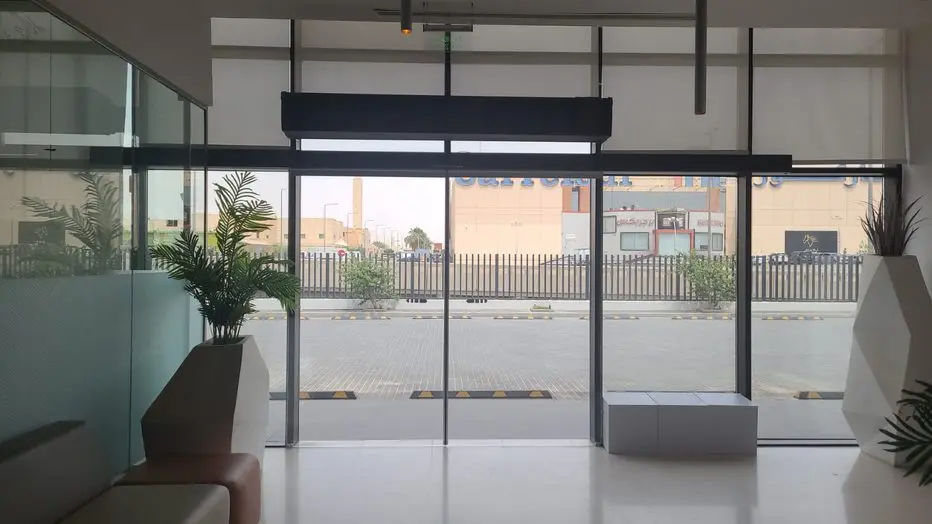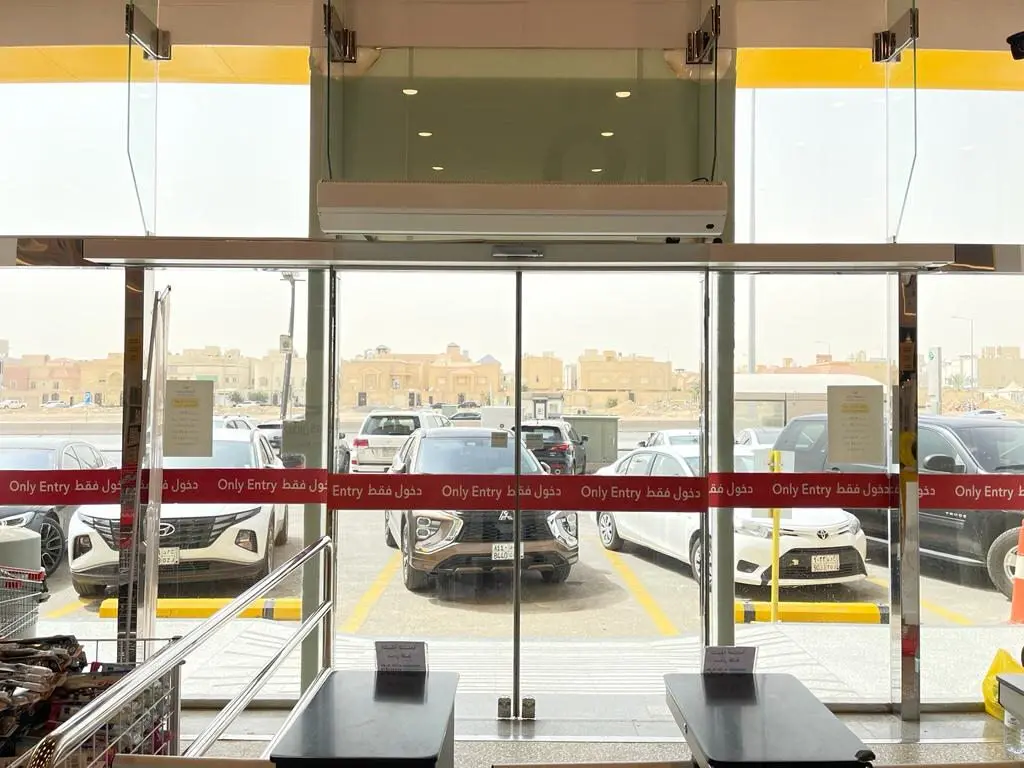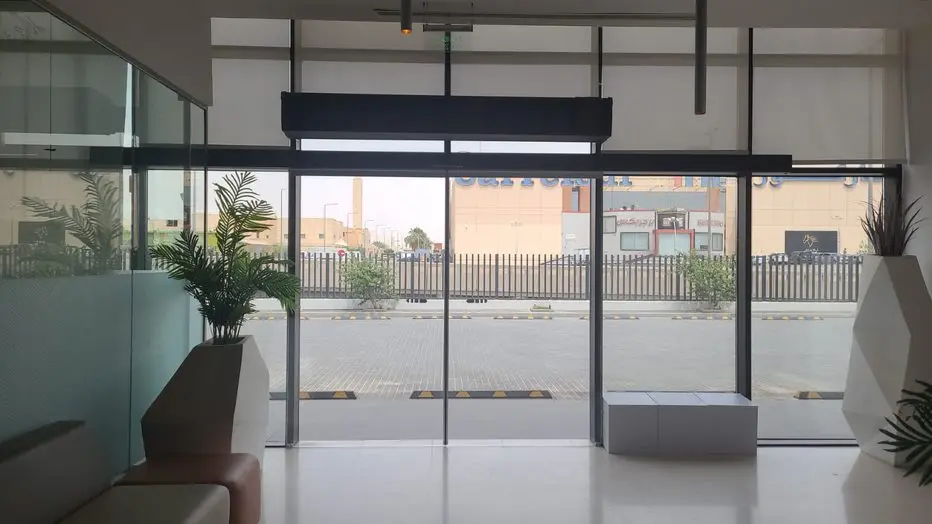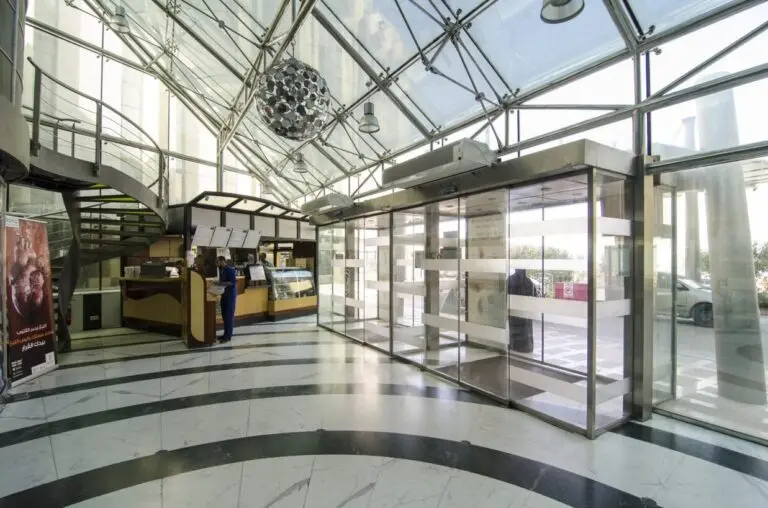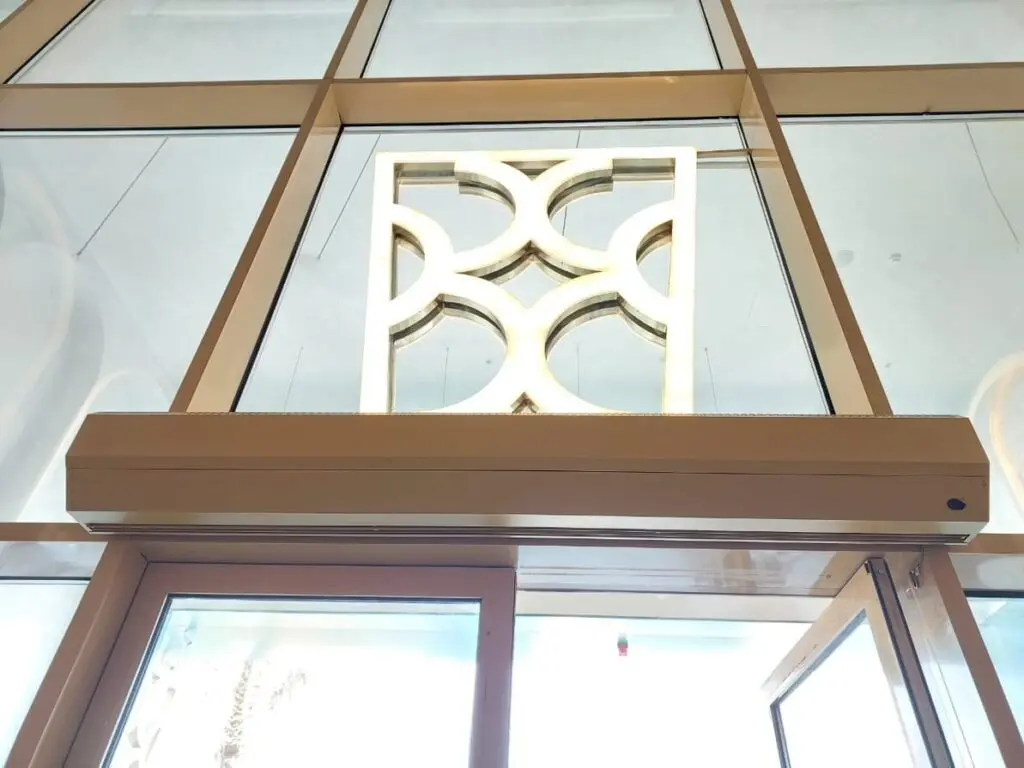Transparent curtains for air insulation and air curtains are two options based on different technologies to achieve the same goal, so through this article, we will review the specifications and advantages of each of these two types of curtains, which helps to understand the differences and make the right decision to meet the needs of insulation, heating or cooling in commercial and industrial premises.
Definition of transparent curtains for air insulation and their importance
Transparent curtains for air insulation are covers or layers usually made of transparent materials such as plastic or polyvinyl that are installed on Windows and doors to improve air insulation in buildings and are used to reduce heat or cold losses through windows and doors and to maintain the desired internal temperatures without leaking cold or hot air from the outside.
The importance of transparent curtains for air insulation lies in a set of aspects:
- Energy saving: transparent curtains help reduce the use of heating and cooling devices by maintaining the appropriate temperatures inside the building, reducing energy consumption and electricity bills.
- Home comfort: contributes to better comfort at home by providing stable and suitable temperatures for residents.
- Environmental conservation: by reducing energy consumption, transparent curtains reduce greenhouse gas emissions and contribute to the preservation of the environment.
- Furniture and property protection: reduces the impact of harmful sunlight and ultraviolet rays on furniture and interior items, increasing their lifespan and maintaining their quality.
- Improve sound insulation: in addition to thermal insulation transparent air curtains can also reduce the transmission of noise from outside to inside or vice versa.
Read also: The differences between air curtains and plastic PVC curtains
The benefits of transparent curtains for air insulation
Transparent curtains for air insulation provide many benefits to homes and buildings and these benefits include:
- Maintain the view of the house: allows the house to take advantage of natural lighting and the view to the outside without scaling the view or blocking the light.
- Reduce the total cost of heating and cooling: by reducing excess heating and cooling consumption, transparent curtains can reduce overall energy costs in the long run.
- Easy installation: transparent insulation curtains are easy to install and can be installed quickly and easily without the need for special equipment or skills.
- Reduce the need for window maintenance: reduce the accumulation of dust and dirt on the glass and keep it clean.
- Improve visual comfort: transparent curtains can improve the quality of natural lighting in the house and make the interiors brighter.
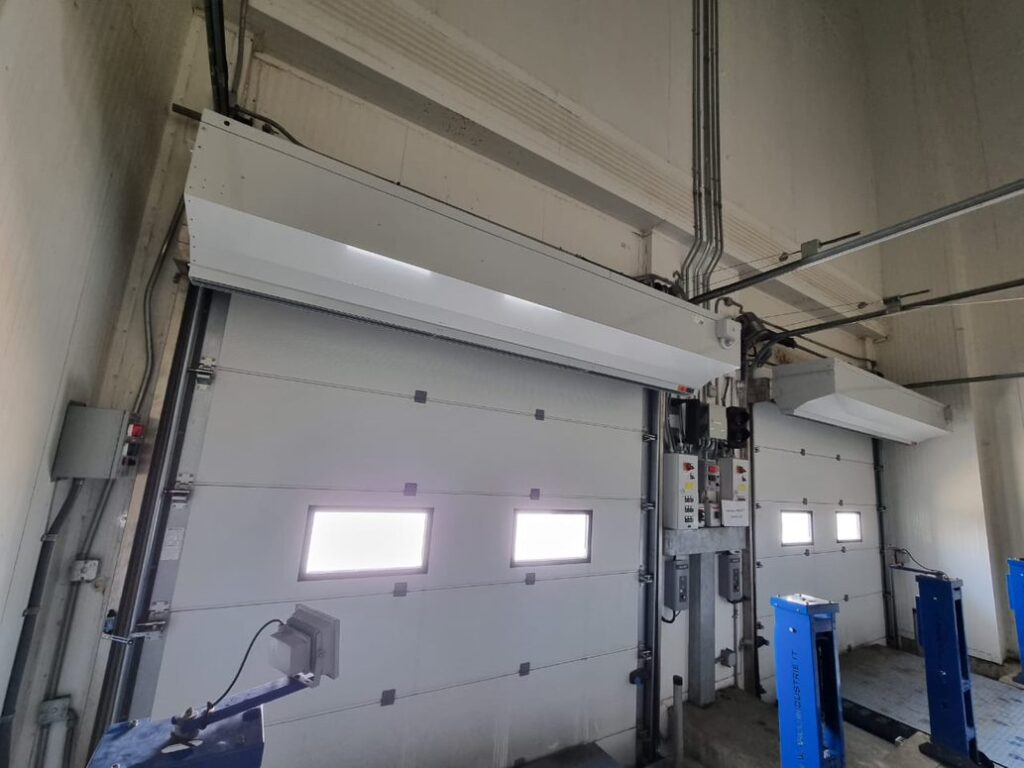
Problems and challenges of transparent curtains
Despite the benefits that transparent curtains provide for air insulation, they face some problems and challenges that users should be aware of:
- Lack of privacy: due to the transparency of the curtains, outside people can easily see inside the house during the day, which reduces the level of privacy.
- The problem of solar radiation: transparent curtains may allow harmful solar radiation to enter the house, which increases the temperature of the rooms on hot days and can cause damage to furniture and property.
- Lack of privacy: at night, when there is less outdoor lighting, transparent curtains can lose their ability to provide privacy.
- Lack of full control over light: although it is transparent, you can have limited control over the extent and amount of light entering, and this may affect your visual comfort at times.
- Freezing in winter: in areas with low temperatures, transparent curtains on Windows can freeze, which makes them less effective as insulation.
- Maintenance: dirt and dust may accumulate on transparent curtains quickly due to their transparency, which requires regular maintenance and cleaning.
- Purchase cost: transparent curtains for air insulation can be more expensive than some other types of conventional curtains.
- Children and pet impact: transparent curtains may be damaged by toys or scratches by children or pets.
What are air curtains and their importance?
Air curtains are a system of thermal and environmental insulation used in buildings to maintain the temperature of homes or commercial buildings. These curtains work by creating an air barrier between the inside and the outside at windows and doors. This is also performed using a fan or a heating and cooling system that pumps and controls air permanently.
The importance of air curtains lies in many aspects:
- Effective thermal insulation: air curtains help prevent the leakage of cold air in winter and hot air in summer, which contributes to maintaining the desired building temperature and reducing energy consumption.
- Energy saving: thanks to their precise temperature control and effective thermal insulation, air curtains prevent the need for intensive use of heating and cooling devices, reducing energy costs.
- Environmental conservation: by reducing energy consumption and thus greenhouse gas emissions, air curtains help preserve the environment and promote sustainability.
- Improved comfort: air air curtains make buildings more comfortable by maintaining optimal temperature and sound insulation.
- Fresh air control: some air curtains have filters to purify the air and remove harmful particles, which improves indoor air quality.
- Air routing: allows the air to be directed inward or outward, allowing precise control of the air distribution inside the building.
Browse also: Problems and disadvantages of used air curtains
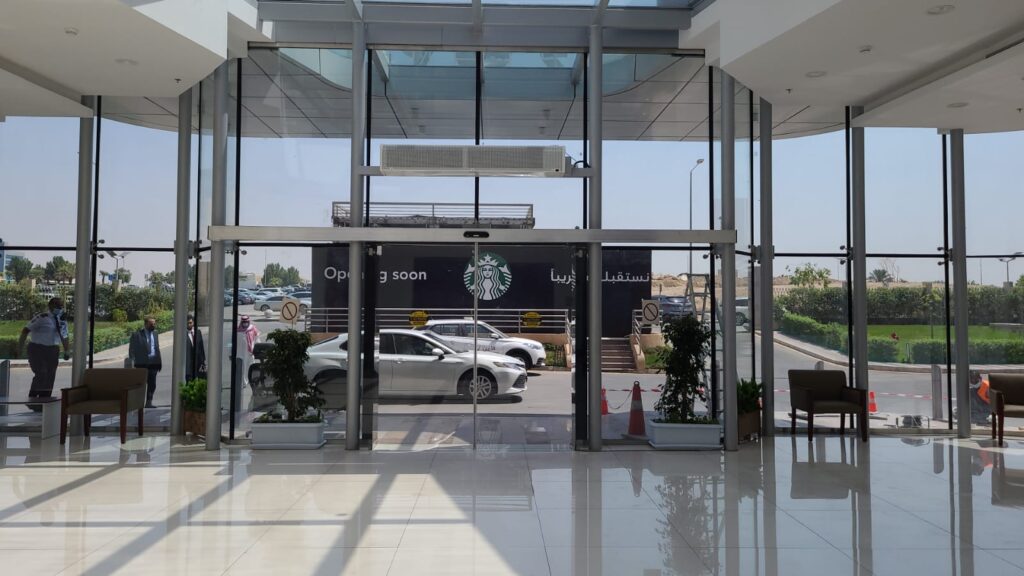
The main differences between transparent curtains and air curtains
Transparent curtains and air curtains are two different types of insulation systems in buildings and have fundamental differences in insulation, overall performance, cost, maintenance, and ease of installation.
Here’s a summary of these differences:
- Isolation:
- Transparent curtains: based on transparent materials to prevent the leakage of cold or hot air from windows and doors, the thermal insulation of these curtains may be less effective compared to air curtains.
- Air curtains: serve to create an air barrier between the inside and the outside, allowing more effective thermal insulation by preventing the flow of cold or hot air into the building.
- Overall performance:
- Transparent curtains: offer limited thermal insulation but allow the introduction of natural light and the view.
- Air curtains: provide better thermal insulation and allow precise control of temperature and humidity in the building.
- The cost:
- Transparent curtains: they are usually less expensive to purchase and install compared to air curtains.
- Air curtains: they are usually more expensive in the initial investment due to the equipment and their installation.
- Maintenance:
- Transparent air curtains: require as simple maintenance as regular cleaning.
- Air curtains: need more complex regular maintenance and inspection of systems, fans, and technology.
- Easy installation:
- Transparent curtains: easy to install and can be installed by personnel without the need for complex equipment.
- Air curtains: need professional installation and specialized equipment to secure and adjust the system.
Stavoklima is a leading company in the installation and maintenance of European air curtains in Saudi Arabia
Air curtains from the Stavoklima company have many advantages that make them a distinctive option for improving thermal insulation and air quality in buildings. These curtains provide excellent thermal insulation as they prevent the flow of cold air in winter and hot air in summer through windows and doors, which contributes to saving energy and reducing heating and cooling costs. Some of them contain air filters to purify the air and remove harmful particles and odors, which improves indoor air quality and increases comfort.
Although there are differences between them, individuals and organizations should choose the type that best suits their individual needs and specific requirements. If the right decision is made and modern technologies are taken advantage of, this can lead to a significant improvement in energy efficiency and the comfort of buildings.
Frequently asked questions about air curtains and transparent curtains for air insulation:
1. Can an air curtain replace a vestibule?
2. Which air curtain is the best?
3. What are the disadvantages of air curtains?
Initial Cost: The upfront investment in air curtains, especially for larger or specialized models, can be relatively higher than some other options. However, it’s important to weigh this cost against the long-term benefits and energy savings they provide.



